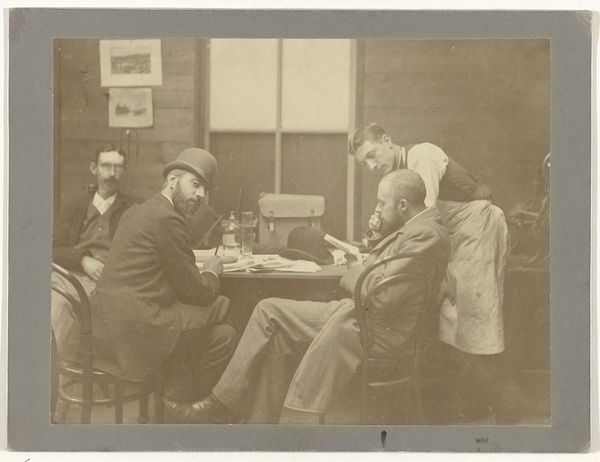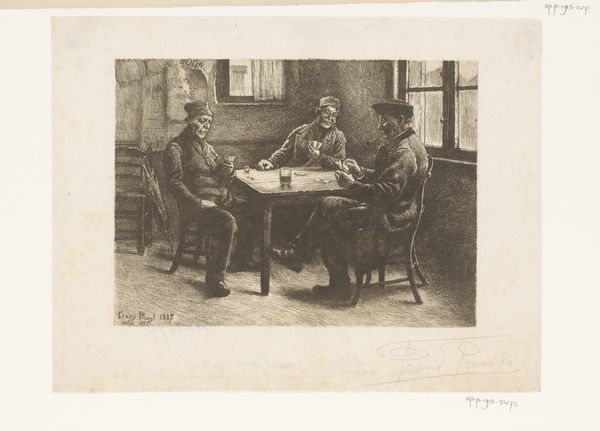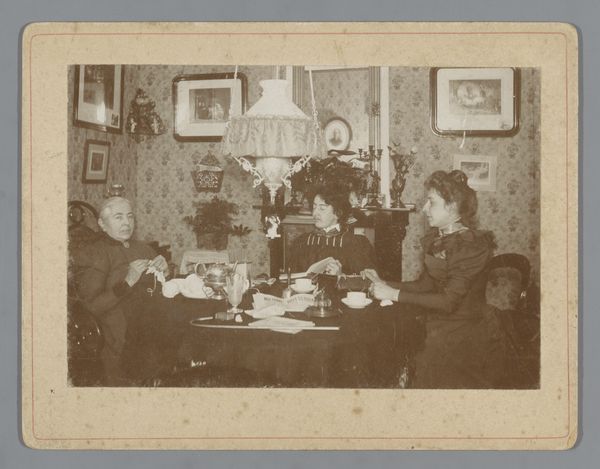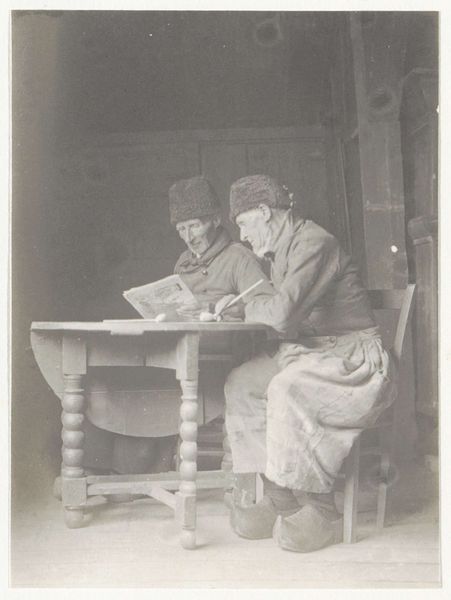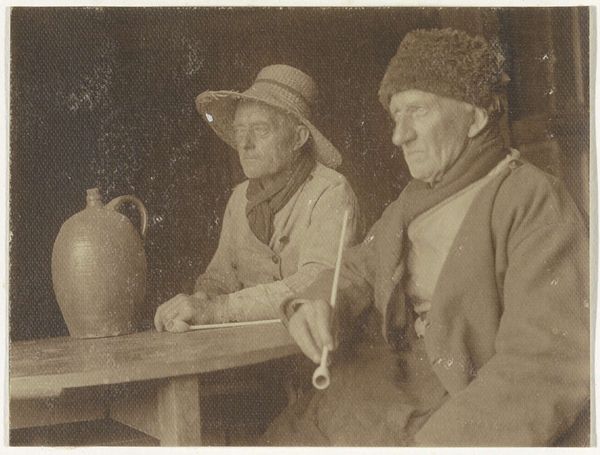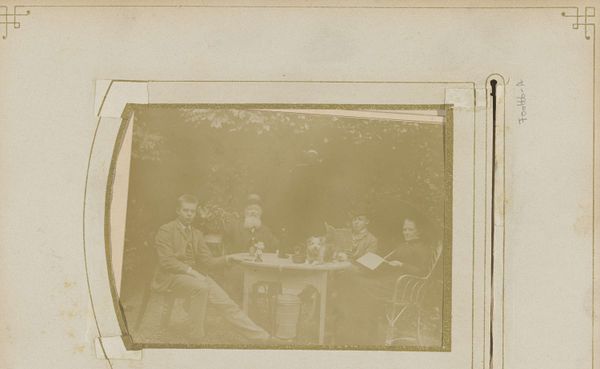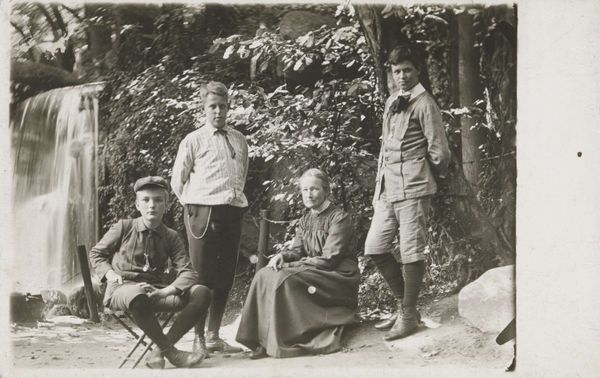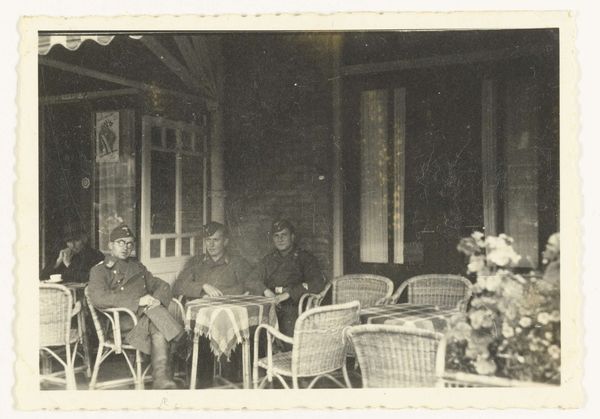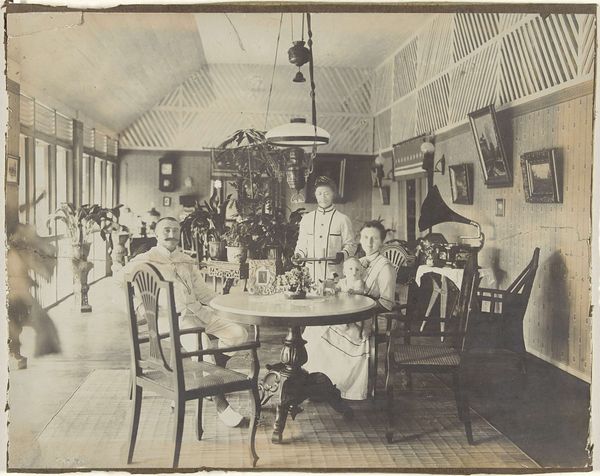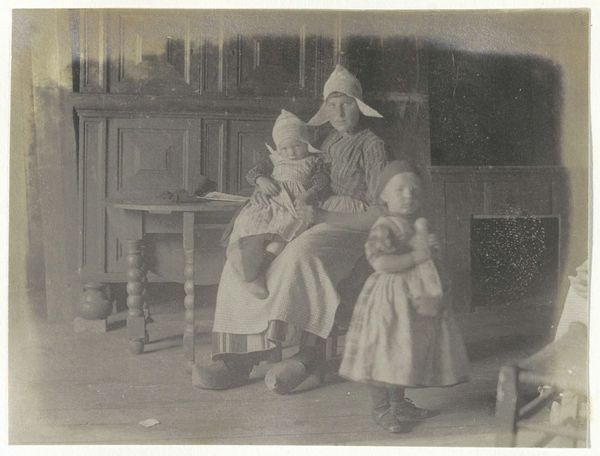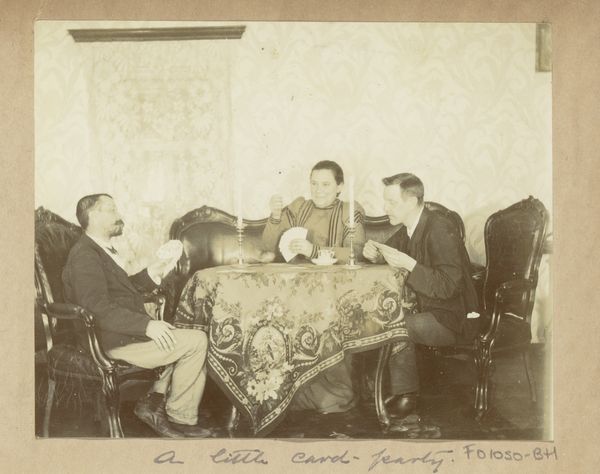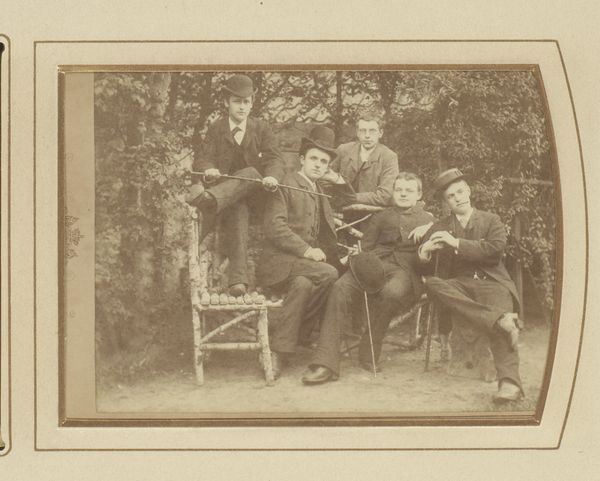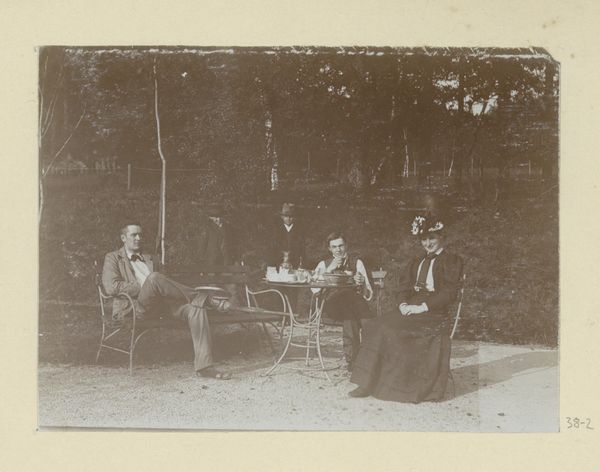
Portret van drie mannen in Volendamse klederdracht, zittend aan een tafel c. 1900 - 1910
0:00
0:00
photography, gelatin-silver-print
#
portrait
#
print photography
#
dutch-golden-age
#
archive photography
#
photography
#
historical photography
#
gelatin-silver-print
#
genre-painting
#
realism
Dimensions: height 70 mm, width 80 mm
Copyright: Rijks Museum: Open Domain
Editor: Here we have an early gelatin silver print, taken around 1900-1910, titled "Portret van drie mannen in Volendamse klederdracht, zittend aan een tafel," attributed to G. Hidderley. It shows three men in traditional Dutch clothing sitting at a table, and there is a pensive mood conveyed. The limited palette of monochrome seems key to its effect. What jumps out at you when you view this image? Curator: I am immediately struck by the image’s planar organization. We observe a foreground populated by the men, sharply in focus, contrasting against the receding planes of the background, its details becoming less defined. Note also the repeated rectangular forms – the table, the doorway behind them, even the newspaper being read. These shapes structure the image, creating a sense of order. Editor: It's interesting you focus on the forms! I was stuck on the sort of "genre painting" aspect to it - the scene of daily life. But yes, the eye is certainly led by those repeating rectangles you mentioned. What is the significance of that kind of construction, from a Formalist view? Curator: The construction emphasizes the artwork as an object in itself, composed of constituent parts. The geometric solidity denies, or at least resists, the sentimental narrative inherent in "genre painting." Consider the tonal range: Hidderley employs a subtle scale of grays to subtly shift between shadow and light across forms that articulate and underscore planar division. Is the lighting not striking? Editor: You are right, the blacks are incredibly deep and that tonality lends itself to an overall atmospheric experience. Curator: Precisely. It all works together to create a balanced, aesthetically pleasing composition. We are guided to contemplate not the subject, but the form itself, to think about our perception and decode its basic syntax, through photography. Editor: This was an enlightening introduction. Thinking about planar construction helps separate the image's visuality from its "Dutch Golden Age" style as an element in its totality. Curator: Indeed. A close examination of form often provides surprising and unexpected insights, and the gelatin silver print serves as its own object of reflection.
Comments
No comments
Be the first to comment and join the conversation on the ultimate creative platform.
